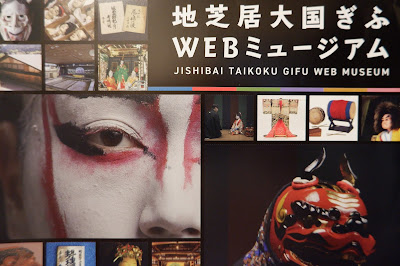Enjoy Ji-shibai plays passed down from the Azuchi-Momoyama and the Edo period in Gifu Prefecture
Gifu is well known for enthusiastic activities by a plethora of groups performing local Kabuki and other Ji-shibai plays
“Ji-shibai” is a generic term for traditional Japanese plays performed by local residents in various parts of Japan. The plays include Kabuki, Bunraku, Noh Kyogen and Shishi-shibai.
One of great pleasures to view the local plays is that it is performed based on scripts made in as far back as the Edo period or earlier, so you can easily be exposed to Japanese traditional culture and history passed down in Japan for a long period of time.
The other feature of Ji-shibai is that it is not performed by professional actors, but by local residents themselves. In addition, local residents prepare almost everything used on the stage from choreography to costumes to musical instruments.
This gives the audience a sense of familiarity with Ji-shibai and its performers. Gifu Prefecture is well known for enthusiastic activities by a plethora of groups performing local plays.
There are 32 groups being engaged in local Kabuki play in Gifu Prefecture. You can enjoy the performances and choreography that have been passed down from the Azuchi-Momoyama period and the Edo period in local playhouses and stages.
Although those plays are performed by non-professionals,
audiences are often engrossed in their authentic performances.
Kabuki, Bunraku, Noh Kyogen and Shishi-shibai
There are traditional ways to enjoy Ji-shibai. They do not only view the plays, but also participate plays in the form of "Ōmukō”, a loud timely call to their favorite performer during a play from the audience. They sometimes throw "Ohineri." a gift of wrapping coins in paper to show their deep emotion and delight.
In a sense, Ji-shibai is created by all the people present at the venue, including the audience and performers. This is the reason why so many Japanese have been fascinated and Ji-shibai has become a traditional culture passed down to the present day.
In addition, in playhouses where performances are held, there are buildings that was built from the late Edo period to the Meiji period and has been carefully repaired and relocated to this day.
Visiting those buildings is impressing experience with solemn and majestic atmosphere brought by their long history offering another thrill of Ji-shibai. In addition to Kabuki, there are stage performances called Bunraku or Ningyo Joruri, Noh Kyogen and Shishi-shibai, in Ji-shibai.
Bunraku is said to have started in Gifu from the early part of the Edo period, and characterized by puppets manipulated by puppeteers. Noh Kyogen is said to be a play dedicated to shrine festivals. In addition, Shishi-shibai is a play in which the female main character performs kabuki wearing a lion mask. It is said to have started in Gifu from the late Edo period to the Meiji era. Noh Kyogen is said to be a form of Kyogen that conveys an old style called Sarugaku Noh. Sixteen families known as "Sarugakushu" have passed down Noh Kyogen for generations, through the manuscript of a Kyogen book written in 1598, the oldest in the Tokai region.
In this way, Kabuki, Bunraku, Shishi-shibai, and Noh Kyogen, known as Ji-shibai collectively, were born and inherited in Gifu Prefecture and steadily nurtured as the local traditional culture. Many local plays began to be dedicated to local shrines by the local people, but they became traditional culture in which adults and children in the area participate.
In some areas, children play a central role in dedication plays of Kabuki. In such areas, every year elementary school students give up their summer vacation seriously practicing plays so as not to be ashamed of the important role of devoting themselves and offering Kabuki plays to God, which is a summer tradition for the local people.
You can learn and enjoy more the world of Ji-shibai in Gifu at
https://jishibai.pref.gifu.lg.jp/?lang=english





Comments
Post a Comment